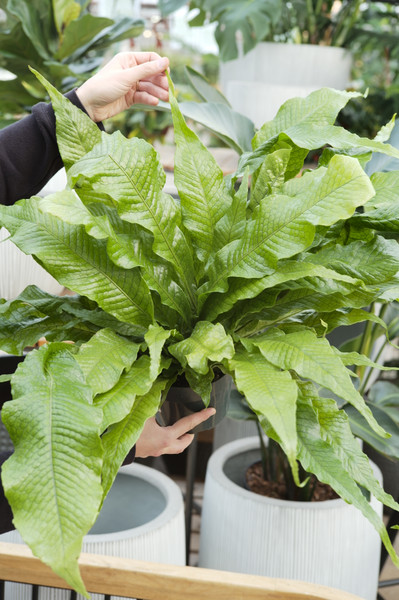Crocodile Fern
Posted by Hannah Brand on Jan 15th 2025
Weekly Plant Chat: Crocodile Fern
Hey Plant Friends!
This week we are talking about Microsorum musifolium ‘Crocydyllus’, more commonly known as the Crocodile Fern. This Fern has become a staff favorite for its beautiful shiny, green, long leaves with a crocodile-like appearance. Ferns are great indoor plants and with proper care and can add a tropical feel to your space especially during the cold winter months.
Family of Origin
Crocodile Ferns are native to Malaysia and belong to the Polypodiaceae plant family along with some of our other favorites such as Staghorn Ferns and Blue Star Fern. This is an epiphyte growing on trees and other plants in its native habitat.
Plant Care
Light
Indoors, place in bright, indirect to medium light. If you plan to put your plant outside for the summer avoid direct sunlight as this can cause scorching. Ferns appreciate a nice shady spot and love the summer humidity.
Soil
Plant in all-purpose potting soil. We love Espoma's All Purpose Potting Mix. Step-up your game with a terrestrial mix; 2-3 parts All-Purpose Potting Soil, 1 part Vermiculite, 1/2-part Earth Worm Castings.
Water
Check weekly for watering; keep the soil moist but not soggy. Allow the top half inch of soil to dry before giving a good soak. Ferns may not recover from drought andt may become brown and crispy if allowed to become too dry.
Fertilizer
Fertilize weekly during periods of active growth with an all-purpose fertilizer such as Schultz. As growth slows in the winter months, fertilization may not be needed.
Hot Tips
Ferns require evenly moist soil and extra humidity. Grow in a naturally more humid space such as a bathroom or near the kitchen sink. Place away from drafty windows.
Keep an eye out for common pests such as mealy bugs and spider mites. Check for pests weekly while watering and keep a bottle of Bonide’s Insecticidal Soap on hand for easy treatment.
Crocodile Ferns are pet friendly.
Shop Now!
Always approachable and happy to help!

